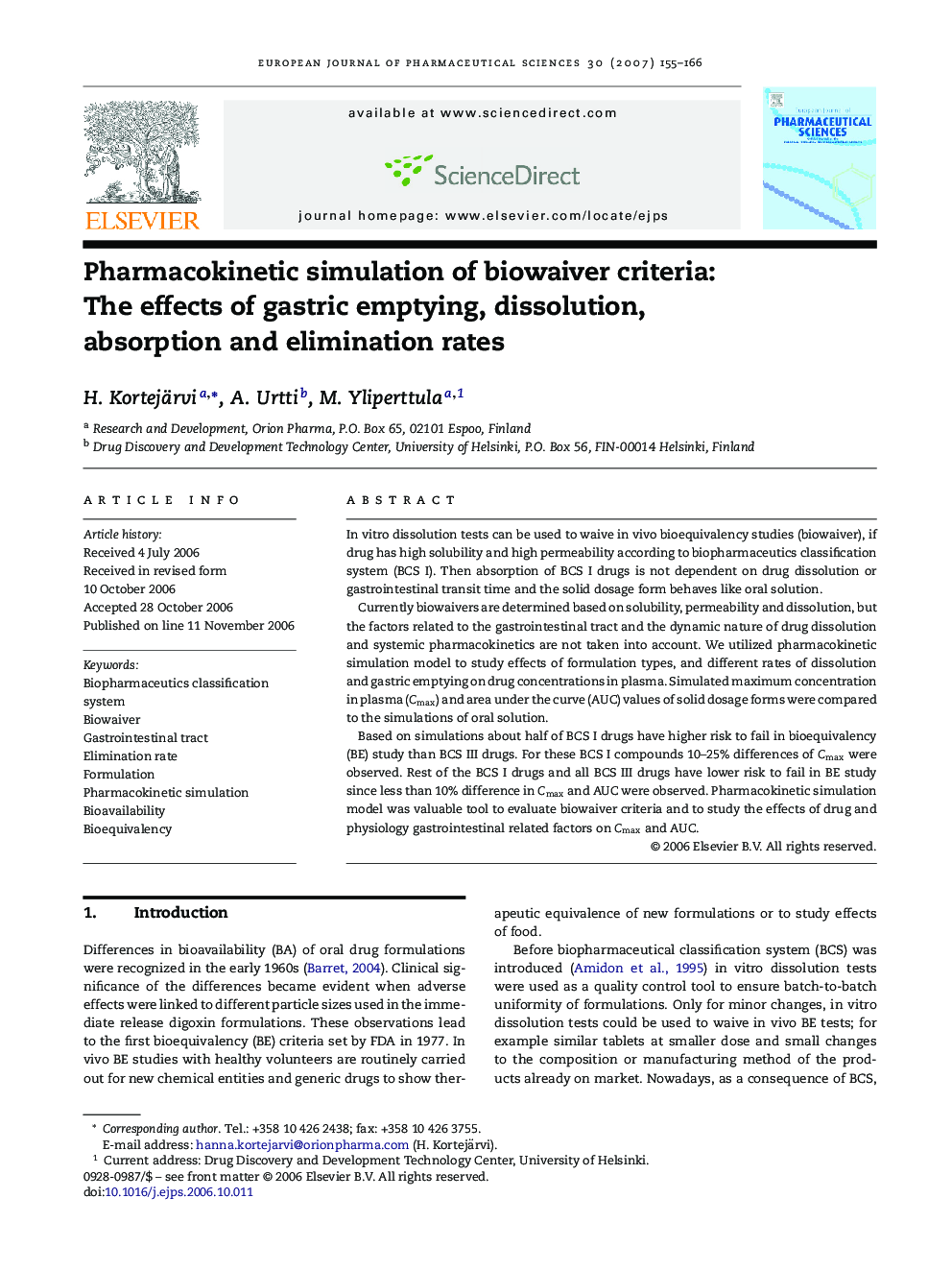| کد مقاله | کد نشریه | سال انتشار | مقاله انگلیسی | نسخه تمام متن |
|---|---|---|---|---|
| 2482659 | 1556287 | 2007 | 12 صفحه PDF | دانلود رایگان |

In vitro dissolution tests can be used to waive in vivo bioequivalency studies (biowaiver), if drug has high solubility and high permeability according to biopharmaceutics classification system (BCS I). Then absorption of BCS I drugs is not dependent on drug dissolution or gastrointestinal transit time and the solid dosage form behaves like oral solution.Currently biowaivers are determined based on solubility, permeability and dissolution, but the factors related to the gastrointestinal tract and the dynamic nature of drug dissolution and systemic pharmacokinetics are not taken into account. We utilized pharmacokinetic simulation model to study effects of formulation types, and different rates of dissolution and gastric emptying on drug concentrations in plasma. Simulated maximum concentration in plasma (Cmax) and area under the curve (AUC) values of solid dosage forms were compared to the simulations of oral solution.Based on simulations about half of BCS I drugs have higher risk to fail in bioequivalency (BE) study than BCS III drugs. For these BCS I compounds 10–25% differences of Cmax were observed. Rest of the BCS I drugs and all BCS III drugs have lower risk to fail in BE study since less than 10% difference in Cmax and AUC were observed. Pharmacokinetic simulation model was valuable tool to evaluate biowaiver criteria and to study the effects of drug and physiology gastrointestinal related factors on Cmax and AUC.
Journal: European Journal of Pharmaceutical Sciences - Volume 30, Issue 2, February 2007, Pages 155–166